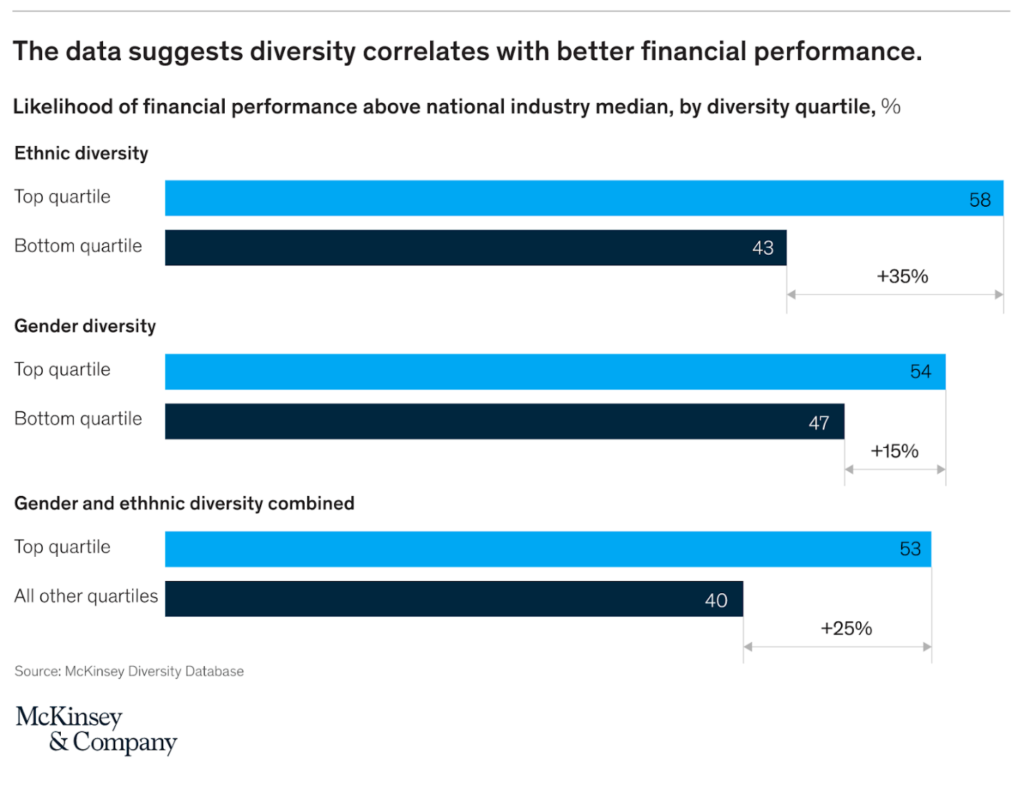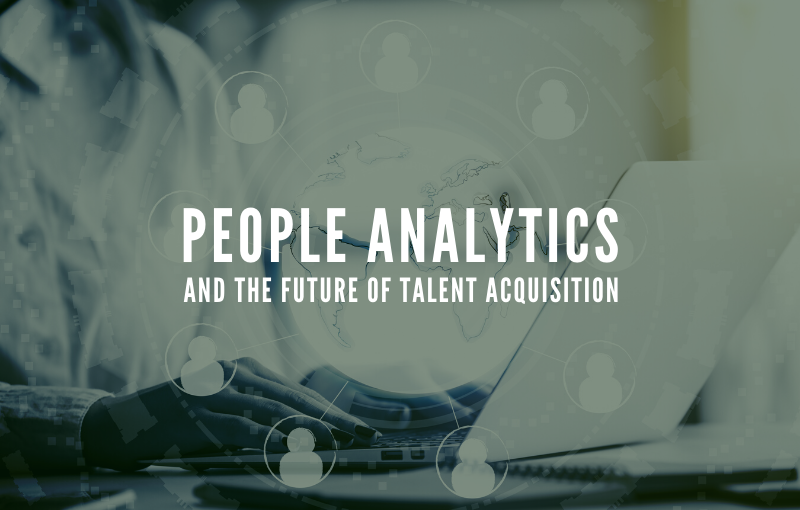People Analytics and the Future of Talent Acquisition
What the hell is People Analytics? What is he going to tell me I need to worry about this time?
Have no fear! People Analytics is actually the name to that unknown something we’ve always been looking for. To help us actually be part of the business and not transactional service providers.
Put simply, People Analytics is the study of the problems that are associated with people and work. There are two main branches of People Analytics data. The first one is usually familiar. These are the inside out People Analytics platforms. So employee engagement surveys, pay parody reports, and turn over reports are all internal HR data generated by a company. They are learning about the people in their own company from their own data.
The revolution is in “outside-in” people analytics platforms. This enables behaviors like competitive salary benchmarking, employee engagement comparisons, and comparative diversity. In the future, before you work for a company, you will be able to not only see how diverse they are. But also how they rank against other companies their size. The tools to deliver these insights are new but they are here now. This is why people analytics has suddenly become extremely relevant and important.
Glassdoor did a lot to try to move us in the direction of corporate transparency, but People Analytics can get us across the finish line.
How? Why?
Because you can police A website but you can’t police THE internet. The reason is that outside-in people analytics platforms act like Google for HR data. Google isn’t designed to search for and display salary information for jobs in New York and Chicago.
People analytics platforms are designed to do exactly that and it means that they are less subject to bias.
Now this information has existed for a while in the public domain, but until recently no one has tried to organize it specifically around HR. This shift and sudden change coincide with the rise in the importance of Data Science and Analytics in corporate America. There has been a renewed focus on deploying analytics to more areas of business.
Unexpectedly, we are at the beginning of the true democratization of HR data and transparency propelled by corporate America itself. So what’s in it for them?
Well for one thing they can finally, at scale, compare themselves to the larger market and their competitors. Some Fortune 50 companies have been able to do this for a while. But a company that, for example, had 50 million in revenue, is unlikely to have invested in that type of information or technology.
Not because it wasn’t valuable, but it typically doesn’t become worth the historical cost of investment until a company is to the point where investing increased HR efficiency justifies the expense. Even then most of the work was outsourced. That doesn’t account for the fact that nearly no one in HR knows what to do with this type of information or how to effectively deploy it.
But large corporations and scientists have long understood the benefits of benchmarking results and making those results repeatable, scalable, and public. People Analytics will empower millions of companies to begin to benchmark their own human capital. It will also enable millions more people to do the same.
Employee Retention
HR in general is considered to be an overhead cost department. A great way to get ahead in that type of environment is to learn how to reduce costs. A simple use case is employee retention.
Citing a 2017 Retention Report by the Work Institute of over 34,000 respondents; it concluded that 75% of the causes of employee turnover are preventable. It also said, “ In dollar figures, the replacement cost is $15,000 per person for an employee earning a median salary of $45,000 a year”
Now if I’m working in an HR function of any kind in a time like this I’m thinking, if I can come up with a system that helps my company save 10 people who would have left would that make me move valuable? What if I start paying attention to our People Analytics dashboard, and dropped managers a note to engage with members of their team that they think might be a flight risk.
That same person could then put in their end of year report that they saved the company $150,000 dollars in lost productivity costs and recruiting cost thanks to data-enabled employee engagement.
In the future, expect to see an expectation for a company to publish their HR data. This will include things like turn over, the average time to fill a job, cost per hire, and diversity ranking. All of these things will be scrutinized by future wall street analysts trying to use HR data as a leading indicator of company performance. They will benchmark companies against things like the most recent McKinsey study (see below) that says companies that get diversity right are up to 35% more profitable than the bottom quartile of companies.

The broader implications
This is just one case study. There are many more. The implications for the broader world of sourcing are profound and I will have to elaborate more in the future. I interviewed Maria Dolgusheva of Panda Docs for this article. Maria holds two Masters degrees including one in Business Analytics.
According to Maria, “TA doesn’t need to become a Prophet but they do need to be able to use the tools that make HR more personal and effective.”
So what does this mean for you? In real terms, it means there is going to be an expectation that you come to an intake meeting with data. You will be expected to already know who all the candidates are. And how likely they are to make a move at this time. You will need to be able to augment the meeting with data on the expected salary range and time to fill. When you fill a job you will also have to justify the diversity of your slate against the market.
All of that seems strange to recruiters right now but as AI automates more of the repetitive tasks Recruiters will move from actors to managers. They will be managing systems in motion. There will still be some call for individual outreach, but by in large algorithms and pre messaged content will conduct outbound sourcing.
Increasingly, “automated yes” hires will require no human interaction. If you pass all screening the system can schedule interviews, follow up with hiring managers for feedback, and give a suggested pay rate based on internal compensation and marketing data. An automated system can even send an offer email. The hiring manager will come to rely on the system to tell him an expected acceptance rate before an offer goes out. No human can do those types of things at scale and speed.
So where on Earth will you come up with all of this?
You will get all of this information from people analytics platforms. If you want to think of an ATS as an engine, then think of People Analytics as the dashboard in the car. Now you as the driver are getting analytics about what is happening with the engine. Based on the conditions you observe you react by pushing on, pulling, or turning a device or pedal.
Recruiting is about to become much more like driving.
Gas in the tank will be the pre-mapped talent market. The start button is the automated sourcing function. The engine turning is candidates moving through the system. Automating a rejection based purely on automation is currently illegal in many places. However, no law anywhere makes an automated yes illegal. So yes gets automated, then it is up to the recruiter to manage the no and the maybe. As well as keep an eye on the speedometer and gas tank.
If the steps between application and offer are perfect for automation. They are basically the same every time. In the process if not in content. Data will force companies to have consistent interview processes because, without it, the data will be useless. Michael Beygelman CEO of Claro HR calls this the “Datafication of HR.”
The work from home adjustment
The COVID pandemic has changed a lot of things and one of the most dramatic is the work from home change. I do not foresee a future where we work in offices in anything like the numbers we have seen pre COVID. Companies have discovered a few things.
First, a lot more of the work they accomplish could be accomplished remotely than they expected. Secondly, productivity in many cases has gone up. Even in less than ideal conditions of working remotely with children, not in school, there has been a general rise in productivity. Third, the people who are now able to work remotely are not going to be inclined to start going back.
Remote work has become a requirement in many fields. Where in the past, it was largely seen as a benefit.
Not only are people not missing their commute they are worried about working in an office with other people who may get them sick. In the past, we have accepted that this happens and we go to work. But, COVID has changed the way many people feel about the topic and has changed their risk tolerance. Post-COVID you can expect to see a significant minority of the job market simply refusing to work in an office.
This means that the important role of People Analytics is only going to grow. Remote work means communicating complex information in precise ways with large groups of people. Many of them will not be experts in the field they are seeing information about.
So your head of programming and sales are going to also see HR data. People Analytics is that platform or means of that communication for HR. In simpler terms, it means HR is going to have to communicate with the business in business terms. The language of 21st-century business is analytics.
A final word of advice from Maria, “Recruiters need to familiarize themselves with technical concepts. They need to understand Python, SQL, and it wouldn’t hurt to familiarize yourself with Tableau.”
The good news is that this engine is just pulling out of the station. All aboard!
Authors
Mike Wolford
As the Talent Intelligence Titan with over 15 years of progressive experience, I've dedicated my career to revolutionizing the talent acquisition landscape. My journey, marked by leadership roles at esteemed organizations like Claro Analytics and Twitter, has equipped me with a deep understanding of recruiting, sourcing, and analytics. I've seamlessly integrated advanced AI technologies into talent acquisition, positioning myself at the vanguard of recruitment innovation.
Recruit Smarter
Weekly news and industry insights delivered straight to your inbox.





